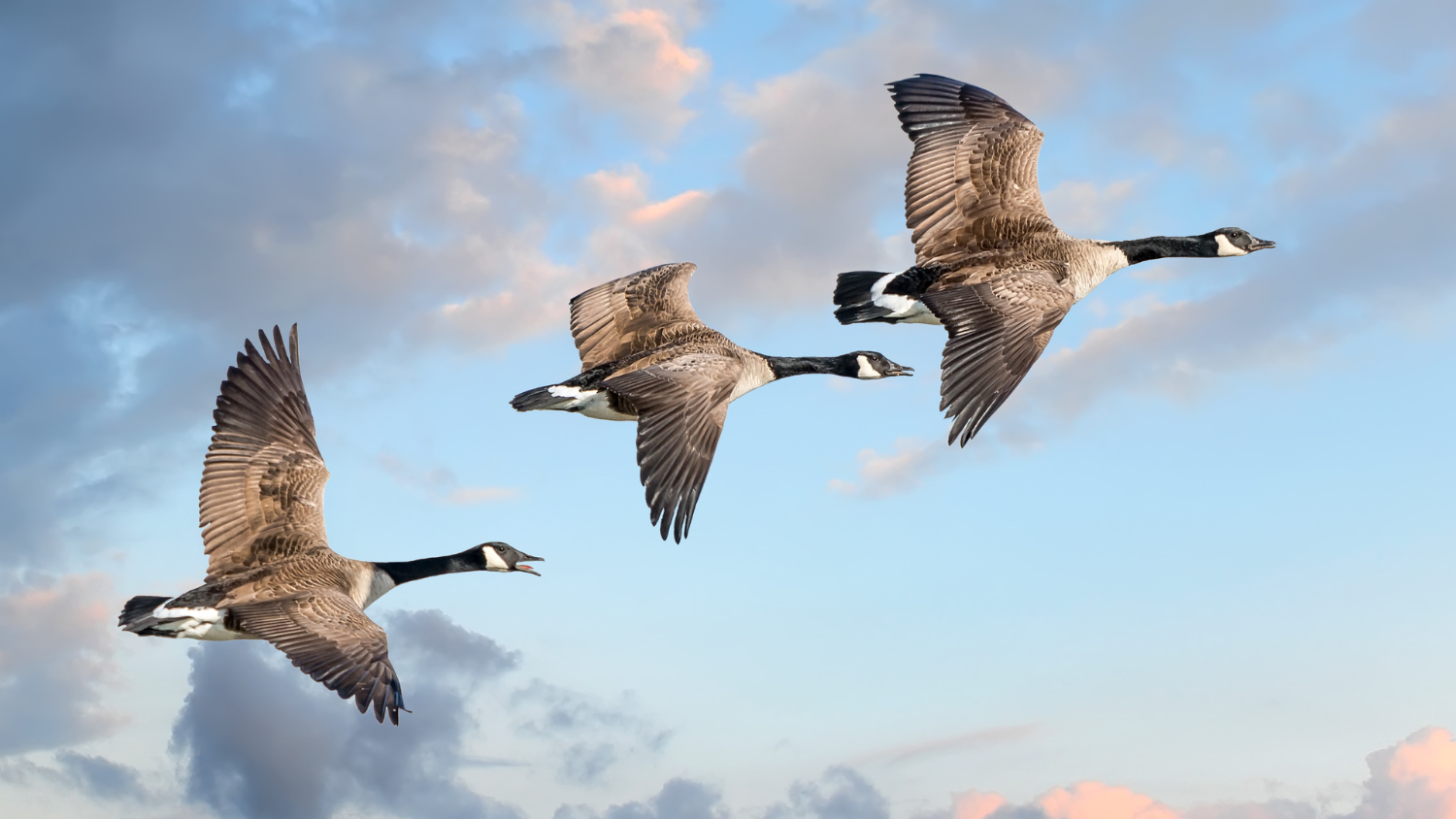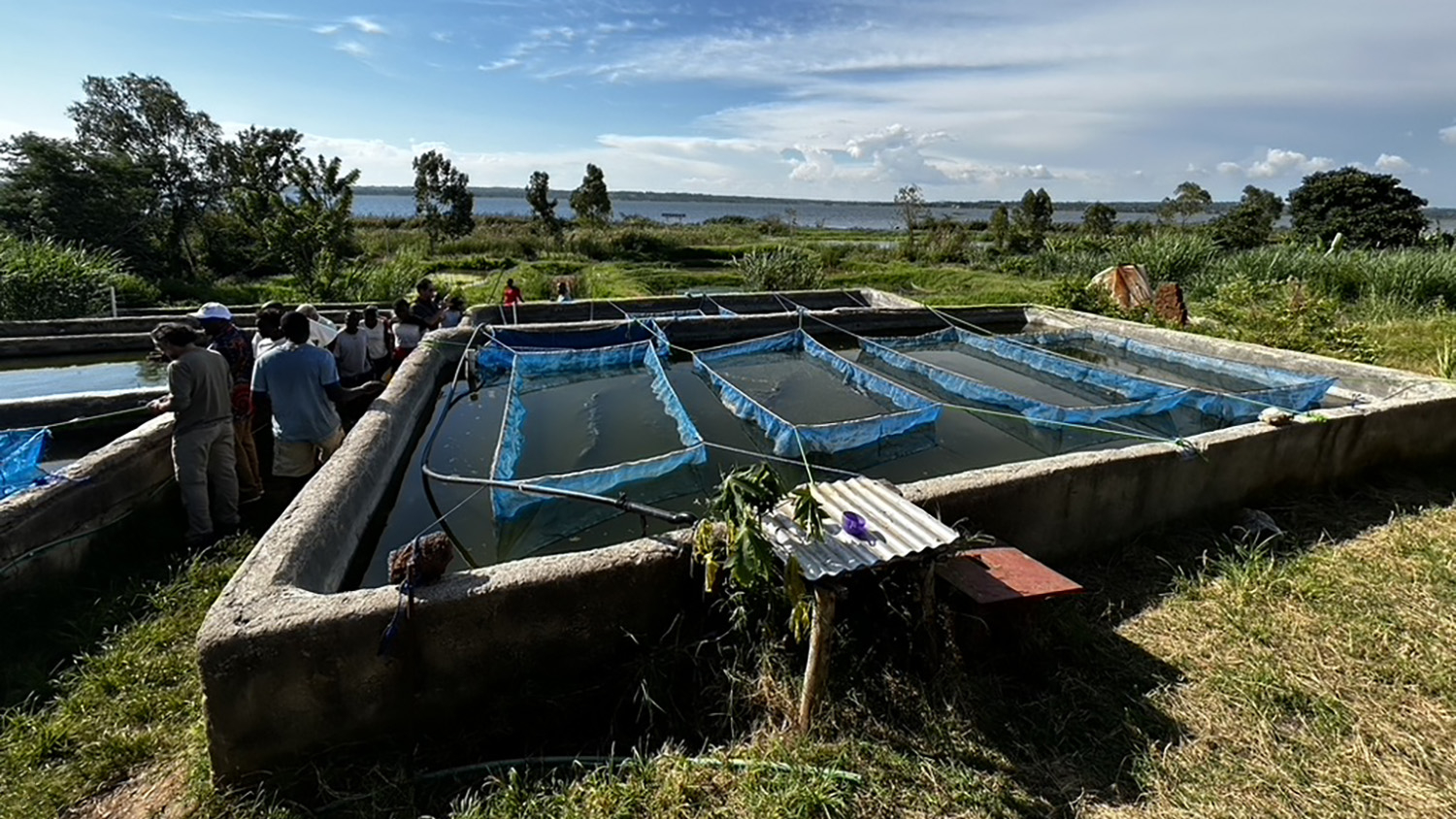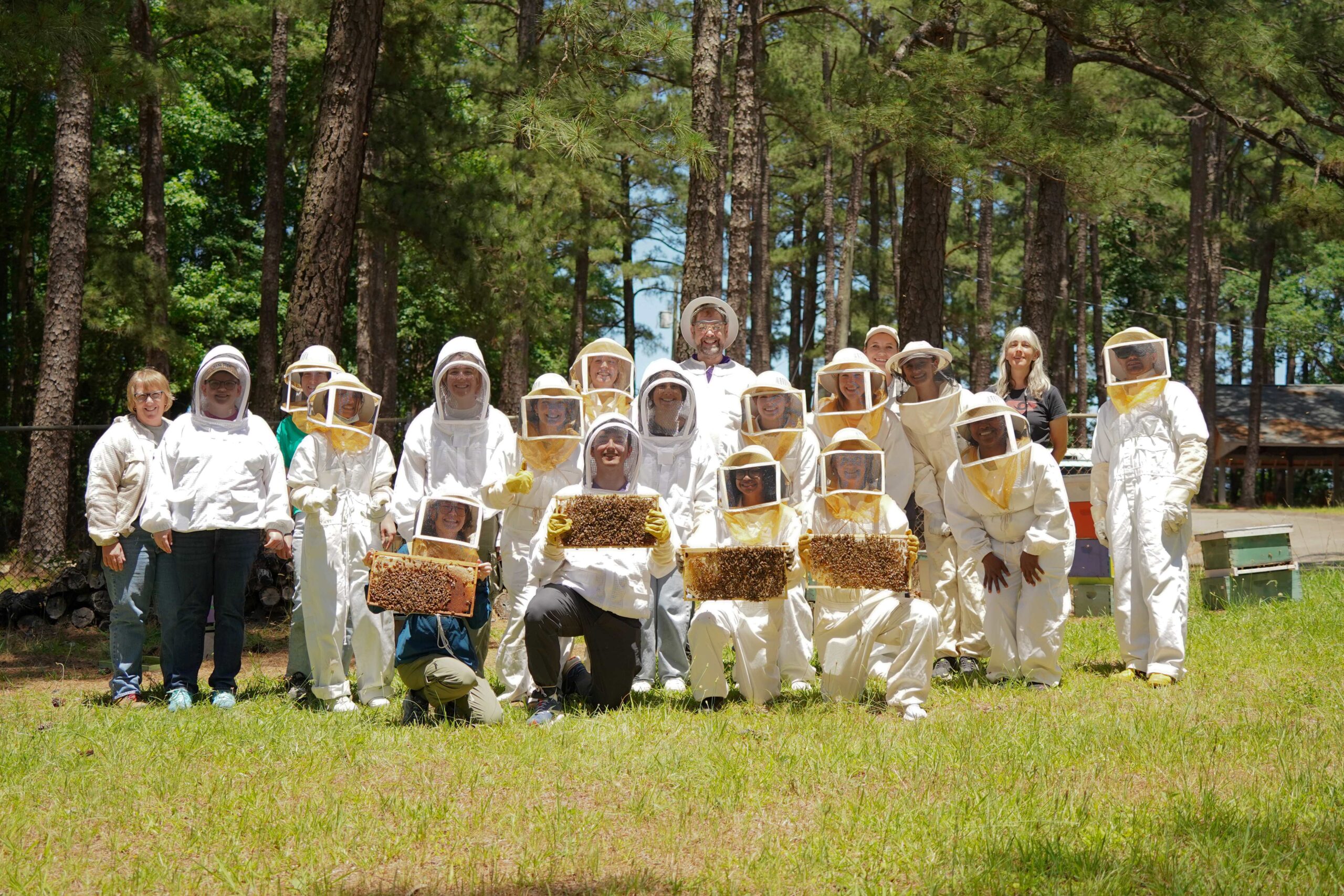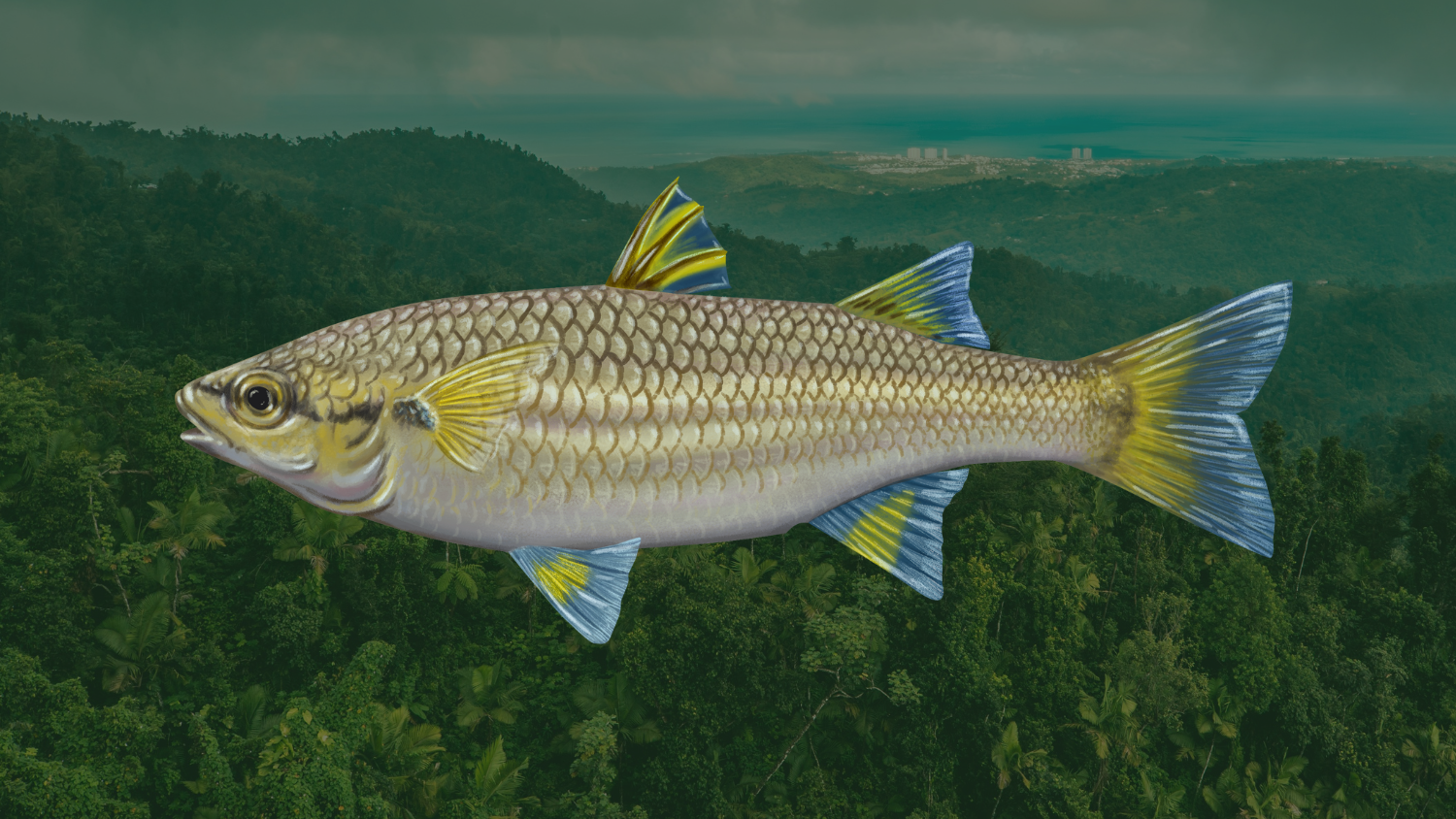Partner Feature: NC Co-op Unit

This blog was written by Zavier Avery as part of his science communication internship with SE CASC during the summer of 2024. Zavier interviewed the team, formatted, and edited the work.
The North Carolina Cooperative Fish and Wildlife Unit (“NC Co-op Unit”) focuses on identifying and assessing environmental changes on fish and wildlife resources. The Co-op unit is one of 43 spread across the nation, based mostly at land-grant universities. Working together, the Southeast CASC and the Co-op Unit have built a legacy of co-creating science that is useful and used.
I sat down with Jaime Collazo, Corey Dunn,and Nathan Hostetter from the North Carolina Cooperative Fish and Wildlife Research Unit to learn more about their work. In this interview, they talk about their path to the Co-op unit, what the unit does, their history of working with the SE CASC, and what they think the future holds for the Unit.
Z: How did you become a professional scientist? What made you want to work in the Co-op unit?
Jaime: I started working as an undergrad student for a professor who had an interest in animal behavior by using birds as a focal point. This sparked my interest in wildlife during my sophomore year. When senior year came around, I was sold. From there, I branched out into more applied wildlife ecology parts of the field.
Corey: My path was a little different. My mother majored in biology and ended up being my high school biology teacher. When the decision came to choose my major in college, I chose biology just like my mom. At the start of college, I focused on pre-medicine and worked as a Certified Nursing Assistant. During my last semester of college, however, I took a class on freshwater ecology and realized I liked to be outside. I found the Co-op unit by cold-calling people in the fisheries and wildlife department. To my surprise, a PhD student in the Virginia Co-op unit had not filled their summer field technician role yet. I got on that crew and have been with the Co-op unit ever since.
Nathan: I took an ecology course as an undergrad student that opened up career ideas that I did not realize were out there. A professor helped me get a summer internship as a sophomore doing bird point counts and amphibian surveys throughout the high Sierras. Doing this work in my 20s helped me realize how amazing it was to do this work and continued me down a path of wildlife ecology.
Z: What is an example of a project that exemplifies what the Co-op unit stands for?
Jaime: The Co-op unit has 2 objectives. One is to respond to the needs of cooperators, which are state natural resources agencies and the U.S. Fish and Wildlife Service on the federal side. The other is training new professionals for the future.
Corey: The Co-op unit is able to hire students, design studies and provide field equipment in order to do research for management partners which helps reduce uncertainty and helps them make the best decisions for resource management.
Jaime: For example, recently the commission needed a status assessment of a bird species in the eastern part of the state. This assessment needed to address a number of components that had to do with the population maintaining itself, growth of the population, and whether the bird represented a remnant of the southeastern subpopulation of the species which makes it unique. Lastly, the commission wanted to know how climate change would affect decisions to implement prescribed burns. Climate and field data are used to help fire and wildlife managers look for solutions to the bird population.
Corey: Similarly, there is a fish species endemic to Mississippi and Tennessee that is data deficient. The Co-op unit worked with the U.S. Fish and Wildlife Service to help develop a standardized quantitative approach on how to evaluate the fish’s degree of imperilment. With the Co-op unit, no management decisions are made; instead, information is provided to the management agencies so they can make the most informed decisions possible.
Nathan: And another example, when talking with the Wildlife Resources Commission, we found a big challenge that a lot of wildlife agencies are faced with is the urbanization of our landscapes. So, we thought about what we could study to help start that kind of research and help inform what management may look like in the future. The Commission identified white-tailed deers as a species of interest since they are usually managed via harvest, which becomes increasingly difficult in urbanized areas. By working with the commission, we were able to plan this in a research framework that brought on grad students who researched different topics like how mortality and deer movement varies across urbanization gradients.
Z: What are some current science priorities that are being thought about in North Carolina?
Jaime: Many of these priorities deal with the consultation of state and federal agencies. The scientists who work closely with these agencies follow recommendations of decisions made about priorities. Some priorities are very large, so you have to take them step by step instead of trying to complete them all at once.
Corey: We do a lot of work with threatened and endangered species as well as priority species for state cooperators. In the Southeast, aquatic connectivity is relevant, so there are thoughts about extreme flows, migratory species, and fish passage. Land use change and invasive species are topics to be focused on as well. Since there is an influx of people moving to the southeast, those are topics you want to keep on your radar.
Nathan: When having conversations with wildlife and conservation management organizations, it comes back to land use and landscape change. This drives things like connectivity and species distributions, whether aquatic or terrestrial, and new environments for invasive species. This links back to climate change as well, how landscapes change through time, and what that means for conservation and management actions.
Z: What is the history of how the SE CASC was created, and how have the SE CASC and Co-op unit worked together?
Jaime: The idea of creating the CASCs started in D.C. in 2009. I, along with others, was tasked by the regional director to create sustainable landscapes which was not an easy objective to tackle. There was a lot of work to do pertaining to landscape-level analysis at the regional level. When the time came for universities to compete for the Southeast Climate Science Center, N.C. State was picked, in part, because of the fact that there was already a legacy of work with climate change issues at the regional level and demonstrated capability to do landscape-level modeling. This plus initiating climate change work in the Caribbean made N.C. State attractive for a Southeast Climate Science Center.
Corey: The Co-op unit helps to contribute technical expertise to support local managers with natural resource decisions. The SE CASC helps provide a pool of resources, funding, and collaborators with complementary knowledge which provides the Co-op unit with additional information to support natural resource decision makers.
Z: What do you think the future of your field or of the Co-op unit looks like?
Corey: The model for the Co-op unit may not change because it has been the same since the early 1930’s but, the delivery of science and questions may be different. When the Co-op unit first started, the focus was more on game species. Now, the focus has broadened toward climate science, invasive species, and land use change. Overall, helping agencies deal with major problems, improvement of ecology, and development of new techniques to estimate parameters that aid in response to climate adaptation will likely be the focus of the Co-op unit in the near future.
More about the partners:
The North Carolina Cooperative Fish and Wildlife Unit does research that answers questions about fisheries, wildlife conservation, and management. Research from the unit involves state and federal natural resource management agencies, conservation organizations, and private landowners. The research focuses on the management of fish on public lands, gaining an understanding of what affects the fish and wildlife, and developing approaches that estimate diversity and abundance.
The Southeastern Climate Adaptation Science Center is part of a network of nine centers in the southeastern United States that collaborates with the Co-op unit in research to find answers to climate related issues about fish, wildlife, and land management. The SECASC mission is “ to deliver science to help fish, wildlife, water, land, and people adapt to a changing climate.”
The Co-op Unit, and the SE CASC are located within the United States Geological Survey. Both are sister USGS programs that are embedded at universities.
Learn more about all of the Southeast CASC partners here.
This post was originally published in SE CASC.


